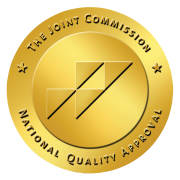A Guide to Depersonalization and Derealization (DPDR)
Both depersonalization and derealization are signs of psychological distress and are considered dissociative disorder. Depersonalization-derealization disorder (DPDR) is a term used to describe the combination of these symptoms.
Depersonalization is the experience of distancing oneself from one’s own identity. The experience can be akin to looking at yourself on a movie screen or standing on the sidelines while your life unfolds.
Derealization is the experience of disconnection from one’s immediate surroundings and the people and things within them. Feelings of isolation from those who matter to you may intensify. You feel as though you are looking at the world through a twisted and surreal veil.
DPDR Causes
There is a lack of consensus on what triggers DPDR. Hereditary and environmental variables may make some persons more prone to depersonalization-derealization than others.
Childhood trauma or other experiences or situations that produce extreme emotional stress or suffering may contribute to developing DPDR symptoms in adulthood.
It may also stem from alcohol use disorder, extreme emotional or financial stress, or prolonged periods of despair or anxiety. Personality problems and other mental health issues or physical diseases, including epilepsy, can also set off DPDR.
DPDR Symptoms
DPDR symptoms differ based on depersonalization or derealization.
Depersonalization Signs
DPDR depersonalization symptoms include:
- Alexithymia—inability to identify or explain emotions
- Physical numbness
- Being unable to control one’s speech or actions common to those with alcohol use disorder
- Disconnection from one’s physicality, mentality, feelings, and senses
- Inability to feel anything about past events
- Feeling like cotton has been stuffed into your skull
Derealization Signs
DPDR derealization symptoms entail:
- Distance and object size/shape distortions
- Increased sensitivity to your environment
- A sense that recent occurrences belong to another era
- A world that is distorted, flat, monochromatic, unrealistic, oversized, or cartoonish
Practical Coping Strategies for Managing DPDR
As difficult as these symptoms are, there are some things you can do that will help alleviate them when they occur. Here are ways to cope with DPDR:
Grounding Workouts
Maintaining a solid relationship with your immediate surroundings. Making sure you are applying intentional mindfulness and awareness. For instance:
- Reaching out and touching the earth
- Being in physical contact with something
- Doing something relaxing, like listening to music and singing
Engage in Mindful Activity
Meditation and other forms of mindfulness can also help you with a sense of presence and bodily awareness. Experts say that these methods teach one to securely and quietly monitor physical and emotional sensations.
Adopting a Healthy Routine
Getting enough sleep can be a good stress management and anxiety reduction technique. Aerobic exercise has been shown to alleviate burnout, and since depersonalization is a hallmark of burnout, this is encouraging news. It would help if you also considered making and sticking with some dietary changes.
Getting Help With DPDR in Newport Beach
DPDR is a serious condition. It is incredibly isolating and can contribute to clinical depression and more. Living life as if your reality is like a dream is not a healthy way to experience being alive.
Getting help from a DPDR center such as Lido Wellness Center in Newport Beach is crucial in managing your symptoms and regaining a sense of wellness. Our CBT therapy in Newport Beach, as well as our EMDR center in Newport Beach, have both proven successful in treating DPDR. Call us today to talk to a mental health specialist and see your best options.
Sources:
- “Depersonalization and Derealization” – from the National Institute of Mental Health (https://www.nimh.nih.gov/health/topics/depersonalization-derealization-disorder/index.shtml)
- “Depersonalization Disorder: A Guide to Symptoms, Treatment and Hope” – from the International Society for the Study of Trauma and Dissociation (https://www.isst-d.org/resources/depersonalization-disorder-a-guide-to-symptoms-treatment-and-hope/)
- “Depersonalization and Derealization Disorder” – from the Anxiety and Depression Association of America (https://adaa.org/understanding-anxiety/depersonalization-derealization-disorder)
- “Depersonalization-derealization disorder: what we know so far” – from the journal of Neuropsychiatric Disease and Treatment (https://www.ncbi.nlm.nih.gov/pmc/articles/PMC5960172/)




